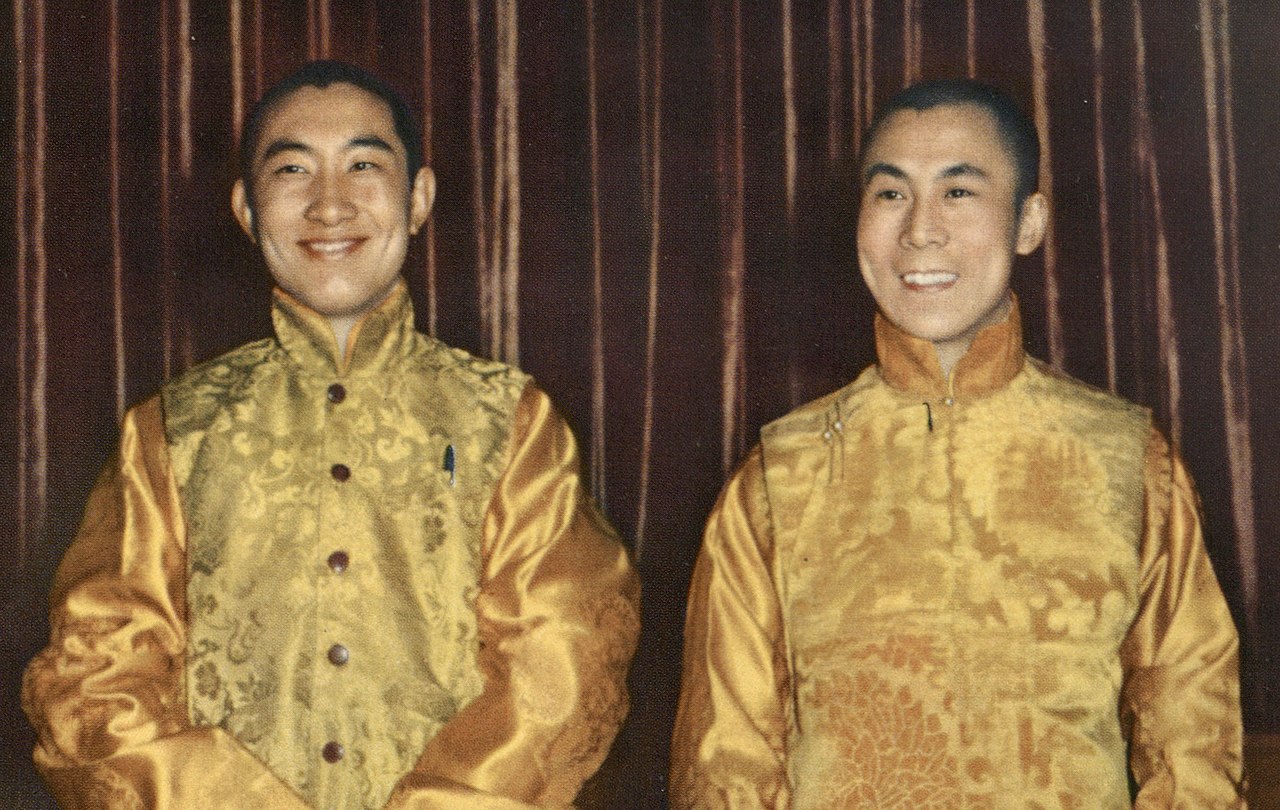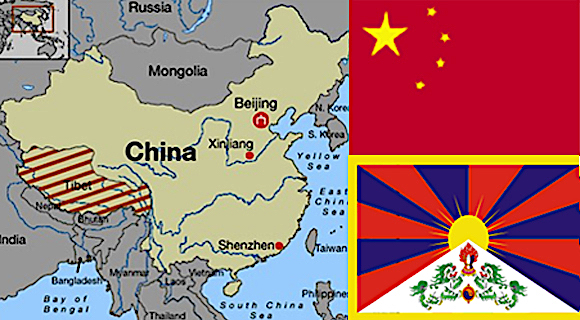While not a traditional Tibetan Buddhist holiday, March 10th is a very important date in the Tibetan calendar.
This year marks the 62nd anniversary of the Tibetan National Uprising.
Around the world, Tibetans and their supporters remember and pay tribute to all those who have scarified their lives for Tibet’s struggle.
There is no other point in Tibet’s history that continues to touch Tibetan lives so intimately and continues to inspire generations with the courage, resilience and hope of the Tibetan people.

History
Tibet was a sovereign state before China’s invasion in 1950, when the People’s Liberation Army (PLA) entered northern Tibet.
In 1951, a 17 Point Agreement was forced upon the Tibetans by the Chinese Government.
By 1958, it was clear that they had no intention of securing the preservation of Tibetan autonomy and institutions.
Many Tibetans attempted escaping the communist persecution by going to India, but only a small percentage actually survived the difficult conditions of the journey.

The PLA slowly established their posts in different parts of Tibet and on the 10th of March, 1959, thousands of Tibetans protested in Lhasa against Chinese occupation.
The uprising in Lhasa was triggered by fear of a plot to kidnap His Holiness, the 14th Dalai Lama.
Chinese military officers invited His Holiness to visit the PLA headquarters for a theatrical performance and official tea and he was told to come alone; that no Tibetan military bodyguards or personnel would be allowed past the edges of the military camp.

On March 10th, fearing for the 14th Dalai Lama’s life, 300,000 loyal Tibetans surrounded Norbulinka Palace, summer palace of the Dalai Lama in Lhasa, preventing the Dalai Lama from accepting the PLA’s invitation.
After the crowds refused orders to leave the compound, the PLA launched an attack, killing thousands of innocent civilians who were only protecting their leader.
The Tibetans were hopelessly outnumbered and only seven days later, fearing for the lives of his people, the 14th Dalai Lama escaped to India and took refuge along with around 80,000 other Tibetans.
By March 17th, Chinese artillery was aimed at the palace and in the resulting melee ended up killing 87,000 Tibetans with many more arrested or deported to labour camps.
That day changed the history of Tibet and is marked as the most brutal and barbaric day on part of China, leading to the death and imprisonment of hundreds of thousands of Tibetans.
March 10th is also regarded as ‘Tibetan Martyrs’ Day’, dedicated to the patriotism of the heroic men and women of Tibet.

C: https://commons.wikimedia.org/wiki/User:Antoinetav
On March 21st, the Chinese began shelling Norbulinka, slaughtering tens of thousands of men, women and children.
In the aftermath, the PLA cracked down on Tibetan resistance and destroyed Lhasa’s major monasteries along with thousands of their inhabitants.

Lhasa’s three major monasteries, Sera-Jey, Ganden, and Drepung were seriously damaged by the shelling, with Sera and Drepung damaged nearly beyond repair.
According to the Tibetan Government in Exile (TGIE), the Dalai Lama’s bodyguard in Lhasa were disarmed and publicly executed.
Thousands of Tibetan monks were also arrested or executed, and monasteries and temples around the city were looted or destroyed.
Anniversary Commemoration
Every year, thousands of Tibetans and their supporters across the world mark the anniversary of Tibetan National Uprising Day.
Tibetans pay tribute to the extraordinary courage of Tibetans’ resistance in Tibet – those who courageously resisted China’s violent colonial rule.
March 10th is a day that serves as a reminder to all, especially to the Chinese government that the spirit of the Tibetans who rose up 62 years ago grows stronger every day, that a new generation of Tibetans is determined to complete the struggle and that a growing global community stands in solidarity with them in their fight for freedom.
Tibetans all over the world commemorated the 61st anniversary of the Tibetan Uprising Day (March 10th , 2020) in large numbers despite the COVID-19 scare and official directives to refrain from public gatherings.
Protests and events were organised by the Tibetans across the world.
The Central Tibetan Administration (CTA) held the official function at Tsuglagkhang prior to the protest march organized by five major Tibetan NGOs – Tibetan Youth Congress (TYC), Tibetan Women Association (TWA), National Democratic Party of Tibet (NDPT), Gu-Chu-Sum and Students for a Free Tibet (SFT)-India.
In New Delhi, the Regional Tibetan Youth Congress (RTYC) demonstrated at the Chinese Embassy with some of the protestors arrested by the Delhi police.
In New York, Tibetans marked the event by gathering at the UN Headquarters.
Similarly, in Sydney and Bern, Tibetans and their supporters marched through the streets following a public gathering event.
However, Tibetans in Nepal could not observe the event as the Tibetan Welfare Office urged the locals not to indulge in any political activities to avoid a crackdown by the Nepalese police.
Nepal’s government has been rampant in curbing any political activities by the Tibetan people including the March 10th commemorations out of pressure from the Chinese regime.

Supporters of Tibet
The Tibet cause has also been championed by many eminent personalities from around the globe including celebrities and star athletes. These individuals have used their platforms to advocate for the freedom of Tibet and have not bowed down to China and its bullying tactics.
Among the world’s renowned actors, Golden Globe award-winning American actor Richard Gere has been one of the most active, vocal and open supporters of the Tibetan cause.
He has been spotted at countless Tibetan events and programs around the world.
Gere has also endorsed several charities such as Tibet House, International Campaign for Tibet, Free Tibet Campaign and the Dalai Lama Foundation.
Recently, legendary Caribbean cricket batsman Sir Vivian Richards shared a tweet – on February 13th – with the hashtag Freedom for Tibet (#FreedomForTibet). The former West Indies cricketer in his tweet said ‘Happy Independence Day, Tibet’.
The batsman’s tweet quickly went viral and dozens of netizens replied and thanked Richards for his tweet and for acknowledging the plight of Tibetans.
Tibetan identity loss
The international community, however, has ignored the genocide and exploitation Tibet has experienced over the last seven decades. Powerful nations have made their peace with China for geopolitical and economic reasons.
In the process, Tibetans have suffered a lot.
Globalization has led to over 160 countries trading with China and the western ‘liberal democrats’ blindly accept the ‘One-China’ policy and recognize Tibet as a part of China.
As a result, China has become more oppressive in Tibet due to lack of any external pressure.
In Tibet, even possessing a photograph of the Dalai Lama could land a Tibetan in jail on charges of separatism.
And, although Tibetan youths don’t retaliate like their counterparts in Palestine or Kashmir, they have resorted to self-immolation as a form of protest against Chinese occupation.

What do Tibetans want
For more than sixty years, Tibetans, despite being deprived of freedom and living in fear and insecurity, have been able to maintain their unique Tibetan identity and cultural values.
More consequentially, successive new generations, who have no experience of a free Tibet, have courageously taken responsibility in advancing the cause of Tibet which is admirable.
Tibetans are still filled with the same devotion and passion to safeguard their leader and homeland from China’s tyrannical rule.
As such, Tibetans are still demanding independence and the freedom to speak their language, to practice their Buddhist religion, and to live freely in their own country.

An entirely new generation of Tibetans in Tibet and in exile organises the Tibetan freedom movement, in passionate and non-violent ways.
Tibetans in different parts of the globe seek citizens around the world to join them in calling for an end to China’s occupation of Tibet.
Tibetans inside Tibet are unequivocally demonstrating that they will not be controlled by Beijing, nor can they tolerate the extreme repression they have been forced to endure for the past six decades.











Comments are closed.